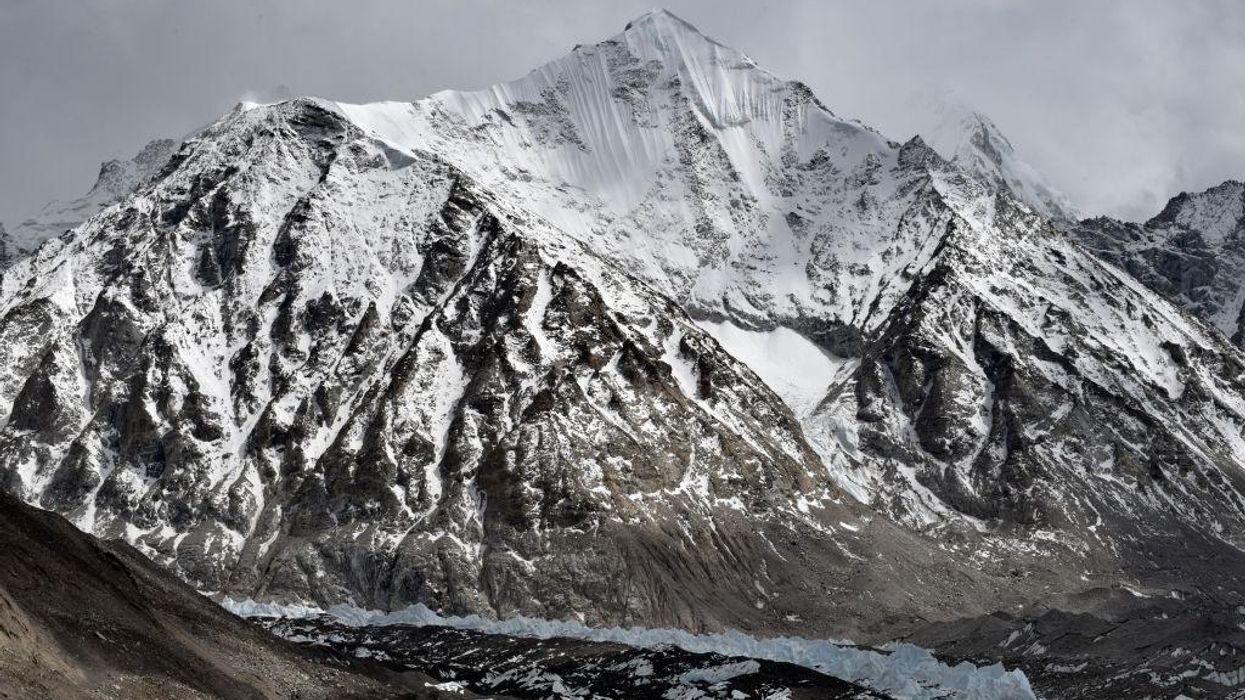
Huang Huo/VCG via Getty Images

As if you couldn't get enough of current-day viruses dominating the news, scientists have discovered ancient viruses that humans have never identified ever before, according to a new study.
Researchers from Ohio State University found never-before-seen viruses in glacier ice samples taken from the Tibetan Plateau in western China. The viruses were from ice cores extracted from the Guliya ice cap in 2015. The ice cores were taken from the summit of Guliya, which is 22,000 feet above sea level. The ice traps whatever is in the atmosphere at the time, including microbes and viruses.
"These glaciers were formed gradually, and along with dust and gasses, many, many viruses were also deposited in that ice," the lead author of the study and microbiologist Zhi-Ping Zhong said in a statement. "The glaciers in western China are not well-studied, and our goal is to use this information to reflect past environments. And viruses are a part of those environments."
The ancient viruses were originally discovered in 2020, but the findings were detailed in a study in the peer-reviewed journal Microbiome on Wednesday.
USA Today reported:
When researchers analyzed the ice, they found genetic codes for 33 viruses. Of the 33, genetic codes for four of them showed they are part of virus families that typically infect bacteria. Up to 28 were novel, meaning they had never before been identified.
The paper says the viruses are potentially 15,000 years old. The researchers note that "these viruses may be active in these ice cores."
"These are viruses that would have thrived in extreme environments," said Matthew Sullivan, co-author of the study and professor of microbiology at Ohio State and director of Ohio State's Center of Microbiome Science. "These viruses have signatures of genes that help them infect cells in cold environments — just surreal genetic signatures for how a virus is able to survive in extreme conditions. These are not easy signatures to pull out, and the method that Zhi-Ping developed to decontaminate the cores and to study microbes and viruses in ice could help us search for these genetic sequences in other extreme icy environments — Mars, for example, the moon, or closer to home in Earth's Atacama Desert."
"We know very little about viruses and microbes in these extreme environments and what is actually there," senior author of the study and glaciologist Lonnie Thompson said. "The documentation and understanding of that is extremely important."
The good news is that these ancient viruses are believed to infect soil or plants and not animals or humans.
And while 28 new viruses sounds terrifying, there are an "estimated 10 nonillion (10 to the 31st power) individual viruses exist on our planet," according to National Geographic.
Just to err on the side of caution, maybe we should put those viruses back where they came from.